










At AARP Family Caregiving, we’re here to help you get answers, connect with other family caregivers and find local resources close to home. So you can take care of what matters most.
To learn more, visit aarp.org/caregiving.


By Jennifer Benson AArP MAssAchusetts stAte Director
November is National Family Caregivers month. More than 48 million family caregivers — 1 in 5 voters — help older parents, spouses, grandparents and other loved ones to live independently in their own homes and communities instead of being forced into costly nursing homes. Here in Massachusetts 780,000 of us are caregivers.
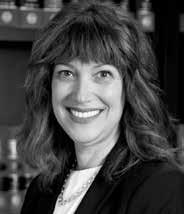
Our nation’s dedicated family caregivers together provide $600 billion worth of unpaid labor each year. They help with everything from bathing and dressing to medical tasks, transportation, grocery shopping and preparing meals. And many of the people who do all this unpaid work are also juggling taking care of other family members and maintaining jobs outside the home. Many are forced to reduce their hours or quit the workforce entirely. The physical, emotional and financial toll of family caregiving is enormous. Family caregivers are stressed and often overwhelmed.
AARP is here to support caregivers. AARP.org has a caregiving section. There, you’ll quickly find you’re not alone. There are plenty of online resources and guidance to help. We cover essential topics such as home safety, financial and legal advice, and managing medical care. The site also provides specialized guidance for caring for loved ones with specific conditions like dementia, diabetes, and heart disease. You’ll also learn the importance of selfcare for caregivers and find tips on coping with stress and finding support groups.
We also have caregiving guides specific to Massachusetts. The AARP Family Caregiving Guides are designed to help develop and implement a caregiving plan for a loved one or friend. The guides include:
• Information on how to have vital conversations
• Ways to assess your loved one’s needs
• Tips for organizing important documents
• A roundup of federal and national resources
• Information on caring for yourself
• Checklists, medication charts and contact lists
You can find these at aarp.org/caregivingresources.
Sometimes, it’s easier to just ask. That’s why AARP has a dedicated, toll-free family caregiving line for people taking care of a loved one. Agents are available to take calls Monday-Friday, 8 a.m. to 8 p.m. at 1-877-333-5885. Our agents can’t provide specific advice to callers, but they can suggest resources on a variety of topics. You don’t have to be an AARP member to call the support line.
During November, we also have an online caregiving series. Every Tuesday, we’ll take up a different aspect of caregiving. We’ll delve into the financial aspects one week, and another we’ll look at the small tweaks you can make to your home so you can stay there as long as you’d like. We’re also collaborating with the Alzheimer’s Association to provide insights on caregiving for someone living with Alzheimer’s disease or dementia. These webinars are your chance to ask questions. You can find dates and times for the webinars at aarp.org/caregivingma.
Family and friends are the backbones of America’s care system, providing the bulk of care for older people in the U.S. as they strive to live independently. If you are not currently a family caregiver, at some point in your life you either will be a caregiver or need a caregiver.
Jennifer Benson is the State Director for AARP Massachusetts. For more articles visit www.fiftyplusadvocate.com.

•
By shAron oliver contriButing Writer
STURBRIDGE – Whenever one feels the urge to unplug from the busyness of modern times, a trip to Sturbridge Village in the picturesque town of Sturbridge may be the ticket. Old Sturbridge Village is a recreation of rural New England during the 1790s through 1830s and is one of the largest villages in the state, covering 200 acres of the last vestiges of colonialism.
The living museum has over 50 buildings, some of which were moved from other parts of New England and contain historically accurate furnishings and artifacts. There are also five gardens, historical exhibits, heritage-breed animals, and costumed historians acting out the jobs and tasks from the time period while answering any questions asked of them.
Old Sturbridge Village is divided into three main sections.
The Countryside
• Freeman Farmhouse – a typical New England farm of approximately 70 acres with a barn, outbuildings, and fields
• Blacksmith Shop – a shop where farm implements and other hard-

ware were made and repaired and horses and oxen were shod
• Bixby House – home of the blacksmith
• Cooper Shop – where wooden barrels, buckets, and pails were made
• Pottery Shop – potters made useful items out of local clay, such as milk pans, mugs, crocks, flowerpots, and mixing bowls
• District School – one-room school
• Covered Bridge – Covered bridges
extended the longevity of wooden bridges in the harsh New England weather
The Center Village
• Friends Meetinghouse – a meetinghouse of the Religious Society of Friends, known as Quakers
• Center Meetinghouse – churches often served as a location for town meetings, elections, lectures, and political events
• Tin Shop – tin imported from England was used to make an array of household goods
• Salem Towne House – a prosperous farmer’s home
• Law Office – a small, free-standing office of a lawyer
• Parsonage – home of a minister and his family
• Asa Knight Store – a country store, transported from its original location in Vermont
• Thompson Bank – a bank that was originally located in Thompson, Connecticut
• Fenno House – a historic house with exhibits that highlight domestic textile production
• Fitch House – a residence exhibit that highlights children and family life
• Small House – a small home based on those of less affluent families and renters, which was built from scratch at the village using period-appropriate techniques.
• Printing Office
• Cider Mill – a horse-powered mill used for the production of hard cider
• Shoe Shop – a historic ten-footer, which was a small backyard shop
By MAtt roBinson contriButing Writer
BOSTON – As a long-time journalist, Carmen Fields has told the story of many people’s lives. But the most personal story she has told is her father’s, the subject of her recent book, “Going Back to T-Town: The Ernie Fields Territory Big Band.”
In the 1930s, Tulsa, Oklahoma was still recovering from the aftermath of the 1921 Tulsa Race Massacre, which had severely damaged its African-American community and the sense of safety in the city.
While many of the businesses that had once made up what was known as Black Wall Street were still in shambles, some African-Americans were able to find a way up and out.
One of these was musician and bandleader Ernie Fields.
A touring musician
Though he had moved to Tulsa in 1924 after graduating from Tuskegee University, Ernie Fields soon began touring far and wide. Along the way, he met such musical legends as country music king Bob Wills and recording impresario John Hammond. With the help of these
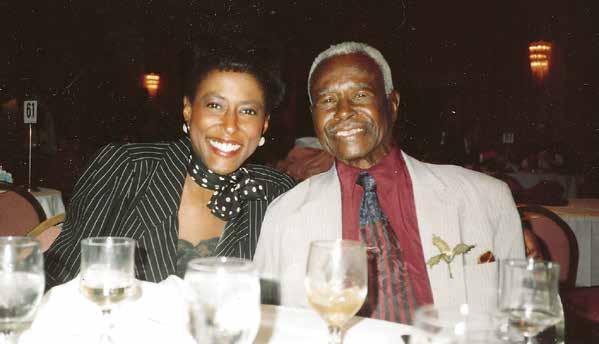
and other devoted fans, Fields was able to write a story unlike most other artists of his time — that of an African-American bandleader who toured not only northern states but also the Jim Crow South.
As Ernie’s story is such a profound one, it

Journalist Carmen Fields with her father Ernie Fields, an accomplished musician and bandleader whose career spanned the eras of jazz, swing, blues, and rock and roll.
deserved a qualified and experienced storyteller to share it. In “Going Back to T-Town,” Carmen Fields discusses her father as both public entertainer and private family man and shows how the lessons of the road educated her life at home (and vice versa). Along the way, she introduces readers to some of the great jazz men who played with and for her father, such as pianist Ernie Freeman, guitarist Rene Hall, saxophonist Plas Johnson, and drummers Earl Palmer and Roy Milton. She also discusses what life on the road was like for an African-American artist in that era.
Much of her father’s story is based on a bus. So too is Carmen’s early journalism career, as she was part of the Boston Globe team that won the 1975 Pulitzer Prize for public service for its coverage of school desegregation and bussing in Boston. Her father was a pioneer who broke new ground in terms of where he appeared. Carmen has also, as the first African-American anchor on WGBH’s popular “Ten O’Clock News” broadcast and the creator and host of the public affairs program “Higher Ground” on WHDH. A graduate of Boston University’s master’s program in broadcast journalism, Carmen has also served as a journalism fellow at Harvard’s Nieman Foundation and assistant professor of journalism at Northeastern University.
When asked how she began her reporting career, Carmen recalled creating a newspaper in Tulsa at the age of nine.
“I collected neighborhood stories and placed the finished sheets in the mailboxes of my neighbors,” she explained, using mid-twentieth-century tools like typewriters and carbon paper. “The journalism flame was ignited by my seventh grade English teacher who had a segment on journalism in her lesson plan,” she explained.
After working on the school newspapers in junior and senior high school, Carmen majored in journalism at Lincoln University — an Historically Black College/University in Missouri. It was there that she got her first taste of television.
“I had an internship at the CBS affiliate station in Jefferson City, Missouri,” she explained. “That was why I decided to pursue broadcast journalism in grad school at BU.”
Though she focused on broadcast work, Carmen’s first job after graduating with her master’s degree was back in print, but at no less a place than the Boston Globe. After eight years there, Carmen moved again to broadcast. As often happens, she ended up in the right place at the right time.
“I was enlisted to fill in for an ill host of ‘Higher Ground’ for a few weeks on WHDH-TV,” she recalled when asked how she came to her own show. “The host recovered but never returned to the show, so
I’ve remained as producer and host for over 20 years.”
Though she saw the costs of segregation at home and at work, Carmen admitted that she did not relate the two for some time. She also did not consider telling her father’s story for a long time either.
“Even as I was covering Boston’s school desegregation issues,” she said, “I did not connect that to what my father experienced in his professional career.”
The fact that she was often only one of a few African-American reporters at the various media outlets she served did not make Carmen think of her father’s story. “My Globe experience was a somewhat lonely experience because there were so few African-American staff members,” she maintained. “But my father had the support and close relations with the members of his orchestra who traveled from city to city on the band bus.”
Despite the relative lack of support, Carmen made her way in the world and was eventually ready to look back at her own story. Along the way, she learned a great deal about her family and herself.
Musical family
“I learned that my father (the youngest of six children) was not the only one in his family who was musically inclined,” she offered by way

of example. “His older brothers and sisters were musical and gave him lessons on piano and sometimes performed with their minister father. One of his brothers was a sergeant bugler in World War I.”
Not only was the Fields family home filled with music, but the house
successful musical career of her father Ernie Fields. (Photos/Submitted)
was often a welcome stop for musicians who were passing through.
“Their home was where the famed Black choir director Eva Jessye stayed when she traveled to Black communities giving music lessons,” Carmen mentioned. “She also gave my father some piano training and always encouraged him to sing.”
While Ernie was undeniably talented, he would have been far less popular and progressive had it not been for the support of more established musical masters like Wills and Hammond. They helped open doors not only at various venues that other African-American performers might not have been allowed in but also at recording studios.
father, he was not as intent on keeping is name up in lights. He just wanted to toot his horn!”
Working with his father’s arranger, Rene Hall, the younger Ernie Fields was also able to access people and places that others did not. Also like his father, Ernie Jr. has used that access to support other artists. He has contracted musicians for recording sessions and for broadcasts that have included “The Voice,” “American Idol” and “PBS at the White House” and a popular music education program called “Jazz in Schools” that has reached over 20,000 students in Los Angeles.
Her father’s legacy
While it is clear that both Carmen and her brother took more than musical cues from their father, she suggests that her father’s legacy offers other ideas as well.
“There are three major lessons I hope people who read the book will take away,” she said, citing her father’s musicianship, entrepreneurship, and dedication to family.
“His career spanned the eras of jazz, swing, blues, and rock and roll,” she noted. She credits her father’s willingness to change with the times and to play what the audience wanted instead of what he might prefer. In order to offer his audiences maximum enjoyment, Fields added dancers and other entertainers to his shows. This helped employ and engage even more artists who might not otherwise be heard.







“My father’s opportunity to record is thanks in large part to his discovery by John Hammond,” Carmen said gratefully, mentioning how Hammond introduced her father to orchestra manager Willard Alexander. “Recordings and radio play made it possible to gain more recognition inside and outside his prescribed territory. And it helped keep him on par with other contemporary artists like Count Basie and Duke Ellington.”
This enhanced popularity, in turn, helped Fields recruit more popular players for his group, which increased audiences and made his band even more popular.
Among the talented musicians that were inspired by Ernie is Carmen’s brother Ernie Jr.
The next generation
“He took the lessons from his work with our dad’s orchestra to a higher plane,” Carmen attested. “Unlike my

And while he did all he could to please people when out on the road, Carmen maintained that the most important thing she learned from her father was the importance of home. “He was a devoted family man who loved being home when his work did not require him to be on the road,” she recalled. Without the scourges of alcohol or drugs that plagued so many other artists, Fields was able to educate his children and remain married to Carmen’s beloved mother for 67 years.
“He always praised the fact that she never grumbled about his life on the road,” Carmen recalls. “She accepted his profession without complaint.”
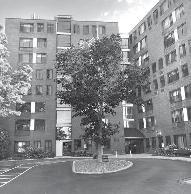
For Spacious 2 BR Apts. Subsidized through



By evAn WAlsh contriButing Writer
SHREWSBURY – Thomas Keegan spent decades photographing others. Now, it’s his career that’s coming into focus.
After 70 years of taking pictures, Keegan has chosen to step away from the camera. Keegan is in the process of moving out of his studio — which has been located on Main Street in Shrewsbury for the last 45 years — and winding down his business, Keegan Photography, which started in 1976.
He has captured countless memories, photographed a half-dozen presidents, and seen generations of children move through the school system into adulthood. Through changes in Central Mass. — and changes to the nature of photography itself — Keegan’s business remained strong.
“I wouldn’t have changed it for the world,” Keegan said. “It’s been the most rewarding profession I could’ve ever been in. I met beautiful people from all walks of life.”
Finding photography
Keegan grew up in Shrewsbury, but it wasn’t without hardship. When he was very young, his Rice Street home was struck by lightning; his family lost everything and had to rebuild their lives “piece by piece,” Keegan said. His graduation from Shrewsbury High School was “blown out” by the 1953 Worcester Tornado that injured almost 1,300. But, tornado be damned, Keegan eventually graduated.
One year later, at age 19, Keegan stumbled into photography. His cousin — Carlton LaPorte, who owned a studio on Highland Street in Worcester — asked Keegan to work beside him. Keegan confessed he “didn’t have any love for photography,” but he accepted LaPorte’s offer.
He’d stay at LaPorte’s studio for the next 22 years. In that time, Keegan developed his photography chops, eventually being named president of the Worcester County Professional Photographers Association of Massachusetts and the Professional Photographers Association of New England.
Among many other accolades, Keegan earned the prestigious “craftsman” title from


the Professional Photographers of America — an award photographers, even those who have been in the industry their whole lives, rarely receive.
Making it to Main Street
After marrying his wife, Anne, in 1974, Keegan explored opening his own studio.
He first broached the question to his wife one Saturday afternoon. At 8 a.m. the next morning, Keegan heard the phone ring. It was Anthony “Spag” Borgatti, a close friend of the Keegans best known for his generosity and eponymous Shrewsbury superstore.
“We were good friends — I had done his kids’ weddings — and he asked if I had thought about opening my own business. He said, ‘I have a spot for you. I want you to go look at it.’ We went … and looked at it, went back to Spag, and he said, ‘The money is here on the table if you want to go and buy it.’ It was incredible,” recalled Keegan.
The Keegan family had just bought a house — the furniture was still in the garage, ready to be moved in — but Spag insisted: “It’s OK, we’ll work it out,” he told the family.
The photography business exploded at Keegan’s new Oak Street studio, which he worked in for three years before moving the company to a larger studio on Main Street.
“I wasn’t sure all the Worcester people were going to support us in the same way. [But] everybody was on the phone waiting for appointments. It worked out fantastic… We were putting wedding [pictures] together in the bedroom, we were putting class pictures in folders in the kitchen,” Keegan explained.
Though camera technology evolved as Keegan continued to shoot, his ability to take excellent photographs never wavered. The key to a good photograph is in the

subject’s eyes, he explained, which convey emotion and expression. Just like LaPorte did for him, Keegan has sponsored young photographers and taught them his secrets.
Keegan has photographed celebrities and other icons. Over the last 70 years, he’s worked with the Diocese of Worcester to photograph various bishops. The Catholic Free Press in 2004 called him the “Chancery’s trusted lensman.” He does his job with “liturgical finesse,” the Worcester-based publication said.
Then there are the presidents. He’s taken pictures of five of them — John F. Kennedy, Lyndon B. Johnson, Richard Nixon, Jimmy Carter and Barack Obama. He also took photographs of Vice President Hubert Humphrey when he spoke at Clark University, and Pope John Paul II when he visited Boston amid downpours in 1979.
But Keegan seemed to take the most pride in welcoming countless students into his studio for school pictures. Keegan photographed stu-
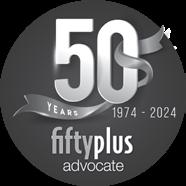
dents from all the grammar schools of Worcester, also taking pictures for South High Community School, Holy Name, St. Peter’s, Doherty Memorial High School, Shrewsbury High School, Sutton High School, Millbury High School, Algonquin Regional High School and many others.
“I never had an incident with any of them. Some kids came from next to nothing, and some of these kids didn’t have a buck for pictures, but they got their pictures just the same,” he said.
With the myriad portraits, family shots, and wedding photos he’s taken,
Keegan has become one popular man. He seems to run into former clients wherever he goes.
“Anne says to me, ‘You’d make a lousy thief because everywhere we go somebody knows you,’ ” he said laughing.
“It’s been a privilege all these years to have tried to give people the very best you can give them. I know how important these photographs are to people — it’s not something you just take their money and run. We had the best people in the business working with us,” Keegan added.
structure built in the 18th and 19th centuries in New England to serve as a shoemaker’s shop.
• Town Pound – for the confinement of livestock found wandering loose
• Bullard Tavern – an early 19thcentury tavern room
• The Stagecoach – a stagecoach marked “Hartford & Worcester” which makes trips through Center Village Mill Neighborhood
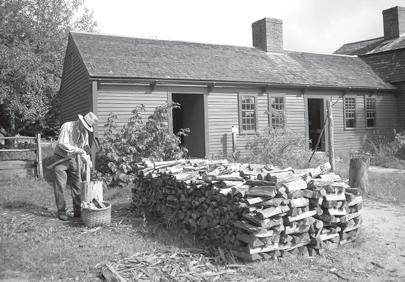
Sturbridge Village is a recreation of rural New England during the 1790s through 1830s with over 50 buildings, which contain historically accurate furnishings and artifacts. (Photo/Wikimedia Commons/Elsa Rolle)
This neighborhood has a gristmill with waterpower to turn a 3,000-pound millstone for grinding grain. The sawmill is a working replica of an “up-and-down” sawmill powered by a reaction-type waterwheel and the Carding Mill is a water-driven facility used to prepare wool for spinning.
Tami B wrote on Tripadvisor: “What a terrific experience! The characters were friendly and happy to share their knowledge as well as encouraging picture-taking. The grounds were clean and well-maintained for walk-
ing. Restrooms were clean, and easily accessible and available at various spots along the exhibits. You would really need 4 to 5 hours to see everything. We would definitely go back!”
A trip to Old Sturbridge Village is a must for anyone, young or old, interested in learning more about what New England colonial life was like 200 years ago or just to escape from the hustle and bustle of these modern times if only for a moment.
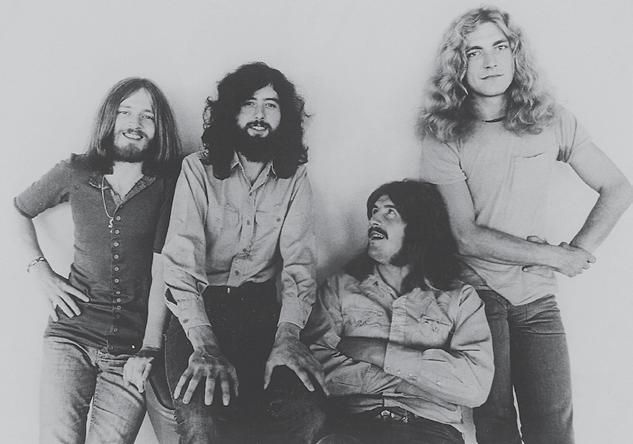

By shAron oliver
contriButing Writer
BOSTON – Perhaps the most infamous Led Zeppelin concert in Boston was the one that never happened.
In the 1960s and 1970s, the British hard rockers were wildly popular at home and abroad. In 1969, the band
performed at the Boston Tea Party nightclub and returned to the city in 1970 and 1971 for a series of concerts. They loved Boston and Bostonians (and surrounding areas) loved them. By the time the 1975 US tour rolled around, something had changed.
On January 6, 1975 thousands of Zep-heads lined up to spend the night
in freezing temperatures outside the Boston Garden to purchase tickets for the band’s February 4 concert. Tickets were sold out by 6:00 a.m. the next day, leaving over 2,000 angry hopefuls empty-handed. Based on reports, people broke into and drank from, and then trashed the beer concessions, flooded the hockey rink and threw de-
bris on it, and set fire to the old wooden seats. Boston Mayor Kevin H. White was not happy and soon afterward, the riot police arrived with dogs.
Ticket seekers gone wild
According to Stephen Davis, who covered the band’s 1975 tour and authored two books on the subject,

Josephine L. Veglia, Esq.


“Pretty soon they were passing bottles of Boone’s Farm apple wine and Ripple — another kind of wine they had back then — and smoking joints and generally getting rowdy. The kids broke into the beer concessions and started feeding themselves. And when the next shift came on, they turned the fire hoses on them. Then they turned the fire hoses on Boston Garden, then they started to torch the seats.”
The venue’s ticket manager at the time, Steven Rosenblatt, explained, “For years and years, we had people line up overnight to wait for tickets. On this night, however, the campers were allowed into the lobby — and they broke into the seating area, leaving Garden officials with a crucial decision to make. You couldn’t have this kind of crowd running around untethered inside the building, so we decided to open the ticket windows.”
An estimated $50,000 to $70,000 worth of damage had been caused and the concert was canceled by Boston Mayor Kevin White. Such recklessness prompted Mayor White to also place a five-year ban on Led Zeppelin performing in Boston. Members would never return as a band since the group dissolved in 1980 following the death of drummer John Bonham.
I was blissfully unaware of any of these shenanigans, but the Mayor was, by all accounts, a Rolling Stones fan. – Jimmy Page


Unaware of ban
Jimmy Page did return, however, in 1995 to perform with former bandmate Robert Plant at The Fleet Center as Page & Plant. Page shared an Instagram image of the crowd outside the Boston Garden in 1975 and commented on being unaware of the 1975 incident and ban.
“On researching for my website, I discovered that on January 6th, 1975, there had been an incident at the Box Office at Boston Garden in Boston, Massachusetts, that had involved a sale / non-sale of tickets to thousands of fans. Police were called, and it all ended with the scheduled Led Zeppelin show being canceled by Mayor Kevin H. White (who saw red) and, even more, there was apparently a five-year ban put on the band playing the venue. I was blissfully unaware of any of these shenanigans, but the Mayor was, by all accounts, a Rolling Stones fan.”
Incidentally, Mayor White had gotten the Rolling Stones released from jail so they could make their Boston appearance in 1972. Recently, 51 minutes of unseen footage shot from a Led Zeppelin concert in Montreal, Canada in 1975 has emerged. Perhaps it can be some sort of consolation for those who missed that magical era up close and personal.










By nAnce eBert contriButing Writer
PITTSFIELD – Businessman Jack Welch rose to fame as the controversial CEO of General Electric, but his roots in Massachusetts were far from the world of boardrooms and the executive C-suite. Born in Peabody to a railroad conductor father and homemaker mother, he graduated from Salem High School and then UMass-Amherst.
Accomplishments amid controversy
General Electric, in its heyday, was a major employer in Massachusetts, particularly in Pittsfield. The company created thousands of well-paying jobs for those in Pittsfield and beyond. When GE closed its Pittsfield facility, it left the community struggling. There is a lot of controversy regarding Jack Welch’s twenty-year tenure as the legendary CEO of General Electric. While he turned the company into one of the most profitable in the world, he created a cutthroat environment that was considered toxic.

Massachusetts
According to CNN, “During his twenty years as CEO, Welch increased GE’s scope and added financial muscle to the company. The market value of GE’s stock rose from $14
billion to $400 billion over those two decades, an increase in more than 2700 percent.”
Competitive culture
David Gelles, the author of the book titled, “The Man Who Broke Capitalism: How Jack Welch Gutted the Heartland and Crushed the Soul of Corporate America — and How to Undo His Legacy,” described how Welch engaged in a process called ‘stack ranking.’ This resulted in a very competitive culture.
“Stack ranking was a process where the managers would sort their workers in A, B or C players and twenty percent were top performers, seventy percent were average and ten percent were sub-par.” wrote Gelles. “The bottom ten percent were systemically let go each year. Because tens of thousands of employees were shown the door year after year, workers were afraid for their jobs and colleagues were competitive with one another.”
GE laid off more than 100,000 people in Welch’s first few years as the Chief Executive Officer and sold close

Within the building amenities include:
• A Theater-like media center
• Handicap-accessible lounges on every floor
• Library equipped with two computers and free internet access
• Physical fitness center
• Game room with billiard table
• Community room with bingo board and large screen TV
Now accepting applications for 62 years of age and older and those who are under 62 years of age and are permanently disabled.
Applicants must meet HUD
to one hundred businesses. He earned the nickname “Neutron Jack,” which was a direct reference to the neutron bomb which kills people but leaves the buildings intact.
Rising through the ranks
Welch worked for General Electric for eight years before becoming the youngest department general manager at the age of 32 when he took over the company’s plastics department in Pittsfield, where he was credited with revitalizing this division. GE sold the plastics division in 2007 to Sabic Industries for $11.6 billion dollars. He enjoyed living in Pittsfield and being a member of the Country Club of Pittsfield. When he was 43, he then became the youngest vice chairman in General Electric’s history. At the height of the company’s success, GE in Pittsfield employed 13,000 employees. The company did much for the community, including sponsoring youth sports, providing good-paying jobs, funding local charities and was an ever-present entity in the city.
• Contemporary styled 1 & 2 bedroom apartments
• New kitchens with built-in microwaves and granite-like countertops
• Small pets welcome
• Heat and Hot water included
• Bus route / ample parking
• Beautiful landscaped grounds with gazebo



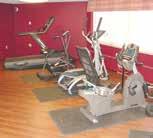

Welch once said, “GE and the community always had a very good relationship. We all liked being out there. We liked the environment of the Berkshires. We supported the city’s charities.”
In an interview with The Berkshire Eagle in 2011, Welch explained the reasons behind closing the power transformer division, which had been losing revenue for some time prior to having it closed. By the time of his 2001 retirement, he had grown General Electric to over $450 billion in market capitalization.
Toxic environmental legacy
It has been noted that during part of his tenure, GE polluted the Housatonic River and properties in Pittsfield with PCBs from its transformer division. For decades, Welch battled the Environmental Protection Agency as well as New York State over PCBs that were dumped into the river to keep ma-
chinery from overheating. The chemicals that were dumped led to extensive contamination around Pittsfield as well as down the entire Housatonic River.
Chemicals were also dumped into the Hudson River at its capacitor product division in Hudson Falls, New York, contaminating the surrounding aquifers as well. Welch did not believe the science that condemned PCBs as carcinogenic.
For decades, General Electric was Pittsfield’s largest employer, often providing income for more than one generation of some Pittsfield families. Jack Welch’s legacy remains controversial and while he made a lot of money for the company, retirees and stockholders, towns in the Berkshires are still feeling the ill effects of the contaminated Housatonic River and the plight to clean it up.
Jack Welch died from kidney failure at age 84 at his home in New York City, on March 1, 2020.


A reverse mortgage gives qualified borrowers, 62 years old or older, the option to receive cash as a lump sum, a monthly check for life, and/or a line of credit that grows every month with NO required monthly principal & interest mortgage payments. All guaranteed by the federal government. You are, of course, responsible for your real estate taxes, insurance, and meeting other loan guidelines.
By not having a monthly mortgage payment, hundreds of thousands of eligible homeowners have utilized a reverse mortgage to:
• Receive tax free monthly cash for life
• Pay off a current mortgage or home equity line
• Payoff credit card debt
• Pay real estate taxes & property insurance
• Complete desired home repairs
• Finalize divorce situations or other legal matters
• Only one spouse needs to be 62 years old
• Gain peace of mind knowing that cash is available if ever needed
• And the list goes on!
NO monthly payment is required
You continue to own your home
Only one person needs to be at least 62 years old Easier to qualify for than a conventional loan You may receive cash when needed There is no cost to learn!
A reverse mortgage might not be the magic wand to solve every life challenge, but it very well could be the next best thing. Take the first step and get informed. I have helped hundreds of people and would enjoy the opportunity of having that conversation with you over the phone or in person.
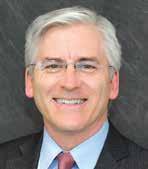
Alain Valles Reverse Mortgage Specialist 781-724-6221
A great place to start is get your free “How to Use Your Home to Stay at Home” 36-page book. This is the official reverse mortgage consumer booklet approved by the U.S. Department of Housing & Urban Development and published by the National Council on Aging.
To receive your free copy, please call or text me at (781) 724-6221 or email me at av@powhse.com
I am also available to evaluate your specific situation, answer your questions, and calculate how much money is available to you.
Alain Valles was the first designated Certified Reverse Mortgage Professional in New England. He obtained a Master of Science from the M.I.T. Center for Real Estate, an MBA from the Wharton School, and graduated summa cum laude from UMass Amherst. He is the senior reverse mortgage loan officer MLO#7946 at Powerhouse Funding Corp. NMLS #1740551. He can arrange but does not make loans. Alain can be reached directly at (781) 724-6221 or by email at av@powhse.com




the largest office supply company in the world, was founded in Boston in 1986.
By shAron oliver contriButing Writer
BOSTON – Staples sparked the office supply revolution, fittingly, because of Independence Day. One of its founders, Thomas G. Stemberg was unable to buy a printer ribbon because his local office supply store in the Boston area was closed for the July 4 holiday. Frustrated by the reliance on small stores, Stemberg envisioned an office supply superstore with longer hours and an extensive inventory.
Though it was not the first office supply retail company to enter on the scene, Staples is the largest. Founded by former business rivals Leo Kahn and Thomas G. Stemberg, along with Myra Hart, Staples’ first store opened in the Brighton section of Boston in 1986. Ten years later, the company reached the Fortune 500 and eventually acquired the Quill Corporation, another office retailer, which got its start in 1956. Staples has made several attempts to acquire its number two competitor, Office Depot, which also owns OfficeMax.
One of the private equity firms where Staples received backing was Bain Capital whose co-founder, Senator Mitt Romney, served on the board of directors for 15 years, helping shape
their business model.
At the beginning, gift certificates were sent to 35 local small-business office managers but after five weeks, only nine of them had been redeemed, prompting Stemberg to focus on marketing projects. The company hoped to appeal to small-business owners and parents shopping for school supplies with its “Yeah, We’ve Got That” campaign in the 1990s. The campaign, which included radio and television ads, ran for eight years, and won several advertising awards. A new slogan came after that one retired.
The large red “Easy Button” was originally intended to be a fabricated button with “magical” capabilities but then customers began contacting the company wanting to know how they could purchase one. Staples responded by making them a real product (available in English as “Easy,” in French as “Simple,” in Spanish as “Facil,” and in German as “Einfach easy”). The buttons were shipped to stores in the U.S., Canada, and Germany in 2005 with sales reaching 1.5 million by the end of 2006. A “marketer’s dream,” the buttons served as advertising and increased brand recognition.
Meteoric growth
By the early 2000s, there were around 1,300 Staples stores located in
By shAron oliver contriButing Writer
BOSTON – It is true that local standup comedians were tickling funny bones before the 1980s. Former “The Tonight Show” host Jay Leno began his career telling jokes at the Two O’clock Club and the Teddy Bear Lounge in the seedy Combat Zone adult entertainment district over 50 years ago. Sales from comedy albums recorded by greats like Redd Foxx, Richard Pryor, George Carlin, and others experienced ebbs and flows, but something was about to change, and the Boston area would play a major part in it.
Stand-up comedy heyday
Veteran Lenny Clarke was the famous “saloon comic” during Boston’s comedy heyday in the 80s. He, along with Massachusetts natives Steven Wright, Steve Sweeney, Paula Poundstone, and Denis Leary owned the comedy club stage thanks to their unique gritty styles and a receptive audience. Stand-up performances grew hot and venues like Faneuil Hall’s Comedy Connection offered the hottest tickets in town.
The average local comedy club was jam-packed six nights a week. It was simply a great time to test out a career in comedy, a time that is immortalized in the 2003 documenta-
Staples | from page 12
major metropolitan cities and smaller markets in 45 states including the District of Columbia, and 10 Canadian provinces. With a determination to provide customers with one-stop shopping, the store stocked up on everything that could be used in an office, from paper and pens to office furniture and microwave ovens. Staples announced in 2021 that it would again try to buy Office Depot, but its offer was turned down in June 2022. That same year, Staples launched a same-day passport photo service in over 1,000 stores and TSA PreCheck enrollment at select locations. With a strong commitment to sustainability, the company is ranked in the top 25 of the EPA’s Green Power Partner list.
Team of rivals
All three of the founders were former competitors in the supermarket industry.
Medford native Leo Kahn was an entrepreneur and reporter who was
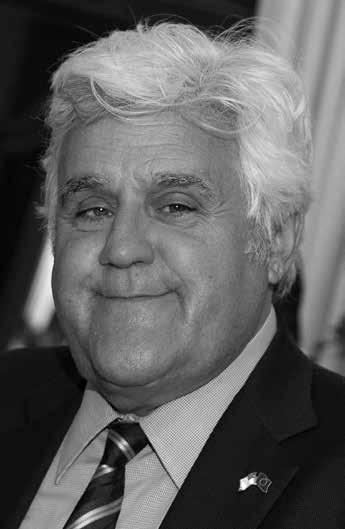
Andover native Jay Leno went from telling jokes in Combat Zone strip joints to succeeding Johnny Carson as host of “The Tonight Show.”
ry “When Stand Up Stood Out.” Fans who recalled the Boston comedy Gold Rush era were quick to comment.
Bobwalton4630 wrote:
“Denis Leary was just on Toucher and Rich, and they mentioned this. I saw it like 20 years ago when it came out. My favorite part is Steven Wright
comedy | 20
By MAriAnne Delorey, Ph.D.
As a provider of housing, I know that my biggest competition is not the fancy new apartments down the street. It is a place we can’t compete with—a place of great history and meaning to every elder. It is their family home.
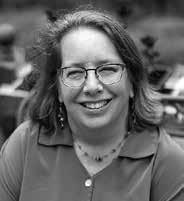
We can compete feature by feature — you can’t beat our accessibility or our convenience. But let’s face a fact — who would want to leave the place where they raised their children, in a community that offers familiarity if not support, and that holds a treasure trove of sentimental possessions?
Downsizing is a real word with a meaning that everyone understands, so it must have a place. The problem is, how do you know when it is time to move into a smaller, more manageable setting?
Here is my decidedly non-scientific, tongue-in-cheek checklist for you to complete. If you check more than one item, I congratulate you on managing well in the community. Otherwise, start filling out applications.
• I love snow. I especially love shoveling my driveway after a good 12–18-inch storm.
• I love the sound of crunching leaves when I rake — it makes me nostalgic for the Great Pumpkin.
• I get so excited when my toilet gets clogged in the middle of the night. I’ve always been one for puzzles.
• My front stairs are easy to manage, even with three bags of groceries in my arms.
• My neighbors are so sweet — they check on me when I am in the hospital.
• My doctor says that climbing the stairs in my house is what has kept me young.
• I am a champion duster. I couldn’t see giving up my extra rooms as it would give me too much extra time.
• I am super steady on my feet and the idea of falling and not having someone nearby strikes me as a sissy move.
born in 1916 and founded the Fresh Fields and Nature’s Heartland chains, which are now part of Whole Foods Market. Following a series of strokes, Kahn died at a Springhouse care facility in 2011.
Thomas George Stemberg was born in Orange, New Jersey in 1949. As vice president in the sales and merchandising division at Star Market, Stemberg also had a background in the supermarket industry. After Stemberg’s employer fired him in 1985 because of “philosophical differences,” he used his year’s worth of severance pay to seek out other business opportunities, which led to co-founding Staples. Stemberg died in 2015 from gastric cancer.
Rounding out the trio of founders is Myra Hart, a Cornell University graduate who was formerly director of marketing for Star Market. She later served as Professor of Entrepreneurship at Harvard Business School until retiring in 2007.
• I feel loved when my family is constantly worried about me and stopping by to check on me.
• I am planning on leaving my son a huge attic full of junk when I die to get him back for those sleepless nights when he was a teenager.
• Paying the heating bill is my way of staying on top of current events in energy management.
In all seriousness — I read a great quote about the stock market — the only way to know when the stock market has hit bottom is when it has started to go back up. Similarly, you won’t know it was the best time to move until something happens to prove you should have moved a while ago. Don’t let a fall or some other event decide your fate for you. Think ahead of time and prevent that event from happening.
Don’t believe it is time to move? Ask three people in your life. Do they ever call just to check in? Would they be less worried about you if you were in a different setting? Do they panic when the power goes out wondering if you will be okay? Listen to those people who worry about your best interests. Perhaps they know something you don’t.
Don’t forget that some of the best places have longer waiting lists. Fill out several applications now because you never know what you’ll need in a year or two.
Marianne Lyons Delorey, Ph.D. is the executive director of Colony Retirement Homes. She can be reached at 508-755-0444 or mdelorey@colonyretirement.com and www.colonyretirementhomes.com.
By JAnice linDsAy contriButing Writer
A couple of Decembers ago, when men at the service station opened the hood of my car to check the air filter, two mice stared at them from a cozy nest inside.
That’s one of the maddening things about mice: their sense of entitlement.
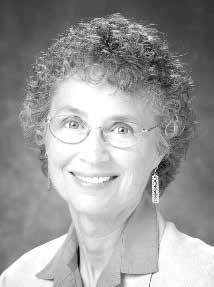
At this time of year, they say to each other, “Let’s go to Janice’s house and build nests on her bulkhead stairs near the cellar door. Let’s play in her garage. Let’s nest in her car!” But they don’t think it’s my bulkhead or my garage or my car; they think it’s theirs.
I know this from evicting mice from nests on my bulkhead steps. When I startle them, they skitter a few feet toward their exit, then they turn around and look me right in the eye as if to say, “You can’t be serious. This is our place.”
I shout that I am, indeed, very serious. Then they skitter under the bulkhead door and outside, to plot their return.
That’s one of the other maddening things about
mice: they are cute, with their big ears and shiny eyes. But cuteness gets you only so far. It does not prevent me from saying, when they converse about coming into my spaces, “I think not.”
It is a constant struggle. I like to think that I am currently ahead. I cannot be sure, especially at night when Henry, an alert black cat with excellent hearing, sits at the door between the house and garage, staring at the door. (Henry is not allowed in the garage.) Or when he stares at the door between the cellar and the bulkhead. (Henry is not allowed in the bulkhead.)
In one respect, I am ahead: Mice do not get into the house itself. So far. Once, an energy audit of our house revealed places where mice had chewed through the insulation between the top of the cellar’s concrete walls and its ceiling. That insulation was replaced with a type that mice don’t like to chew. Allegedly.
I know about “allegedly.” Recently, I tried those little packets that contain a substance whose odor is allegedly repellent to mice. I placed two brand new packets in the enclosed space that is the bulkhead steps. That very night, a mouse built a nest within inches of one of those packets. Perhaps that mouse
had an impaired sense of smell.
I’ve had better luck with a peppermint-scented spray, though I have not yet tried it in the bulkhead where we currently have a truce. I’ve sprayed it under the hood of my car and on the garage floor around the car. The garage is too big to spray the whole thing.
Apparently I neglected to spray sufficiently last winter because, once more, a mouse found my car’s air filter. This time, for a bunch of extra dollars, the service station guys installed a mesh over the opening of the air intake pipe. So far, so good. But still, I spray.
By now, you are probably thinking, “Buy some traps.” I do that, too, but traps are a last resort. I don’t want the little creatures deceased, I just want them elsewhere. I feel bad when I catch one. I apologize to the corpse, saying, “Sorry, little guy. Wrong time, wrong place.” Then I recycle it, leaving it outside for my local crow family who know to watch that special spot near my driveway that I call “Crow Corner.”
My traps catch only mice who are tempted by Hannaford brand crunchy peanut butter. Others might be cavorting gaily in my spaces. Only Henry knows.
Contact jlindsay@tidewater.net.


By shAron oliver contriButing Writer
BOSTON – “Welcome Back, Kotter” might have been a successful sitcom right out the gate in most cities in 1975, but Boston was not so quick to get on board. According to one 1975 newspaper article, WCVB claimed the decision to not air the comedy series was “because its cast of non-scholastic high schoolers might have an unhealthy influence on local students.” The argument was that a TV show about slacker students might inspire students to become slackers.
Heightened tensions during busing crisis
Boston was in the throes of a school busing crisis brought on by a court order to desegregate its public schools. The show was about a New York City high school teacher named Gabe Kotter and his classroom of wisecracking multiracial troublemakers dubbed the Sweathogs. There were fears in Boston that airing the show might heighten tensions in a city that had already seen numerous protests and incidents of violence.
During the time, actor and co-

median Gabe Kaplan, who played Mr. Kotter, called the station’s decision “the worst kind of censorship” in an interview with New Jersey’s Courier Post and added that “there’s really nothing controversial about (the series).”
A Boston TV station initially refused to air the show
“Welcome Back, Kotter” in the mid-1970s for fear it would inflame tensions over the city’s forced busing crisis.
case at all. We don’t consider the program offensive in any way. (Station vice president and general manager Robert) Bennett acted independently because of our school situation here.”
Set in Brooklyn, “Welcome Back, Kotter” showcased a multi-ethnic cast of characters like Freddy “Boom Boom” Washington (African American) played by Lawrence Hilton-Jacobs, Juan Epstein (Puerto Rican Jew) played by Robert Hegyes, Gabe Kotter (Jewish) played by Gabe Kaplan and of course, Vinnie Barbarino (Italian American) played by two-time Academy Award nominee John Travolta.
In a bonus scene from CNN Original Series “History of the Sitcom,” co-star Lawrence Hilton-Jacobs stated, “‘Welcome Back, Kotter’ was not trying to make a statement about integration. It just showed you it as a norm. When we came on — on a Tuesday at 8:30 — we got the most insane ratings.”
However, the affiliate remained undeterred. A press representative for the station said in a 1975 interview, “The people who produce the show have said we aren’t carrying it because the show is controversial. That’s not the
Now accepting Applications for 62 years of age and older and those that are under 62 years of age and are permanently disabled.
• Heat and hot water included
• Qualified Applicants pay 30% of adjusted income
• 24 hour emergency maintenance
• Non-Smoking Community
• Monthly activities include: exercise classes, birthday parties, book mobile, blood pressure screens and podiatry
• Manicured walking paths with garden plots
• Ideally located in Natick residential bus route • Pets okay under 20 lbs.
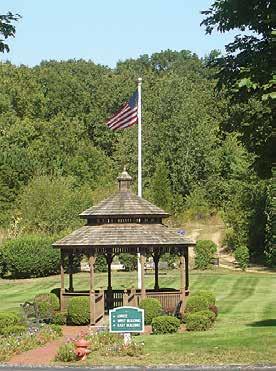

Boston TV station relents
The following year, WCVB finally welcomed the hit sitcom to their primetime lineup and fans praise the show not only for the lovable and mis-


By MichAel PernA Jr contriButing Writer
SHREWSBURY – In 1905, Worcester businessman Horace Holly Bigelow decided to open what would today be called a “cutting edge” amusement park. This was quite a different venture from his previous career — he was a hugely successful industrialist who had made his fortune in the shoe-making industry, inventing machines that were used to make shoes much more quickly than the old method of making them by hand. In 1881, he had opened “Bigelow’s Rink” in Worcester, a roller-skating venue that became very popular — so popular in fact that Bigelow was taken to court by the city because he had the business open on Sundays, which was not allowed at the time. Nothing much ever came of the issue, as times were changing and so did the restrictive guidelines.
On the shores of Lake Quinsigamond Bigelow actually had built a mansion on the shores of Lake Quinsiga-


mond, on the Shrewsbury shore, just south of what is now Route 9. He decided to build his new amusement park, called “White City,” featuring “Fifty Thousand Electric Lights” — the inspiration for the name coming from an exhibit at the 1893 Chicago World’s
Colony Retirement Home III is congregate housing for seniors. Enjoy nutritious “Home Cooked Meals,” served in our attractive dining room with your neighbors and friends.

The “Shoot the Chutes” ride at White City amusement park in Shrewsbury featured boats that would hurtle down a ramp and plunge into a man-made lake.
— on a large parcel of land adjacent to his mansion.
After several postponements, including a carpenter’s strike, power plant problems, and a near-riot by patrons storming the gates when the park couldn’t be opened on time, the great White City Amusement Park opened on June 18, 1905. Even blazing hot temperatures didn’t dissuade the thousands of excited park visitors. White City featured many attractions: The “Shoot the Chutes” ride featured boats that would hurtle down





a ramp, under a “bridge” packed with park-goers, and plunge into a manmade lake; the “Whirl of Captive Airships” had what today would be known as rocket ships that would spin out over the “Lake.” The “Captive Airships” were pointy on both ends — people in those days didn’t realize that real rockets would have an engine on one end. Another big hit was “King Dodo’s Palace” — which would today be called a “fun house” — which was adjacent to a photo studio that advertised “Your Picture Made and Finished in 3 Minutes.”
A miniature railway and restaurant/ dance hall which featured the White City Orchestra, and the “Scenic Railway” were other popular features.
Over the years, the park underwent several renovations. The Hamid family bought the park in 1927 and made several changes. One was the “Zip” — a large-scale roller coaster. Another was removing the “Shoot the Chutes” ride; however the man-made lake was still used as a large swimming pool. A roller-skating rink and “Beano” parlor were also added. An elaborate lighted fountain that had been a feature at the 1939 World’s Fair was installed.
White City was hugely popular throughout the region — people would travel by trolley, auto, bus — just about any way they could to visit the park. The late Angeline (LaComfora) Perna, in a 1997 interview, recalled how she and her sister, along with their friends would visit: “We would walk there every Sunday (from their home in West Boylston) to go roller skating. We would only have enough money for the bus ride home, but sometimes ended up getting a ride from one of the boys that had a car.”
There were several games of chance featured in the park, along with a number of food stands selling various treats. The late Joseph “Pony” Lucier, who worked at the park operating the carousel, met his future wife, who worked at
one of these stands, there. He recalled: “Popcorn, ice cream, and pop, along with hot dogs and hamburgers, which sold at 5 cents — up to 10 cents, were tasty bargains.” One of the people who got their start working at the park was David “Duddie” Massad, who worked at a stand guessing people’s weights — he went on to become a wealthy businessman who owned several automobile dealerships in addition to other business interests.
The area around the park was full of other businesses that catered to the huge crowds — no less than four diners, a number of nightclubs and bars — “Tilli’s,” “The Happy Hour” and “Palais Royal” were very popular spots. “The Happy Hour” was well known for the many famous Hollywood stars that visited. The late Albert “Lovey” Garganigo recalled spending “one memorable night” (as he called it) at The Happy Hour in the company of the beautiful movie star Jane Russell.
By 1954, a New York businessman, Larry Knohl, with what might be called a “shady past” (he had been associated with Jimmy Hoffa, served time for embezzlement, and was questioned in the slaying of Murder, Inc.’s Albert Anastasia) bought the park. A number of new rides and attractions were installed, including a new “fun house,” a Ferris wheel, a “Roll-A-Plane” ride, miniature golf course and “Kiddie Land” rides. The carousel was moved to the corner of Route 9 and South Quinsigamond Avenue and an old bowling alley was torn down and replaced by a new building housing games and refreshment concessions. A new roller coaster was being built until a severe windstorm on February 25, 1956, destroyed it, leaving nothing but a heap of rubble. Fortunately, the storm occurred at night, so no one was injured.
Decline and closure
Despite hosting several famous acts to a packed house, such as Frankie Avalon, Paul Anka, Jerry Vale, Edie
Gorme, Dagmar, and Bobby Darrin, White City fell on hard times. Rumor had it that Knohl had not been paying taxes on the park. Labor Day 1960 was the park’s last day of operation, after a 55-year history of thrilling thousands upon thousands of patrons.
The park was bought by Albert Shore, a Rhode Island businessman from Providence. After a series of fires destroyed many of the park’s buildings, an auction was held, selling off the park’s rides. The carousel was purchased and later operated at several amusement parks around the country until ending up at a park in Florida. The
carousel’s horses were then sold off to collectors.
White City’s land was turned into one of the area’s first shopping centers, which featured a Bradlee’s department store, a supermarket and several other stores. The “White City” name was retained, and the shopping plaza was later expanded to “White City East.” A movie theater was later added, which is now closed and replaced by a restaurant.
The famed White City amusement park is still fondly remembered by many local residents, even after having been closed for sixty-four years.







By sAnDi BArrett contriButing Writer
BOSTON – Imagine exploring the world without ever having to drive further than Boston Harbor. The Flynn Cruiseport Boston, formerly known as Black Falcon Pier, offers docking for small ocean ships that will take you on an exciting adventure. You board your beautiful cruise ship, unpack once, and sail away in your personal floating hotel room. Your only worries are what excursions you will enjoy and which dining venue’s sumptuous cuisine you will explore.
From March to November, Boston Harbor is the embarkation (and disembarkation) for many cruise adventures. Thousands of travelers from around the world begin their cruising holiday in Boston. Itineraries include destinations across the eastern United States, Canada, Bermuda, Greenland, Iceland, the Caribbean, and Europe.
There are a variety of itinerary lengths to suit your level of adventure. Embark on a seven- to 14-day, all-inclusive adventure to Quebec, Toronto, Prince Edward Island, Bermuda, and a variety of sunny Caribbean destinations. Travelers can enjoy a Boston-to-Boston itinerary or begin and end in another fabulous destination.
There are a few Grand Voyage sailings out of Boston. Sail away for 41 days on Oceania’s Insignia with stops in Bermuda, St. Barts, Antiqua, St. Lucia, Barbados, Grenada, Bonaire, Aruba, Tobago, and several points

along the Amazon River in Brazil. Take Holland America Line’s 35-day Boston-to-Boston voyage in 2026 on the Zuiderdam to experience the solar eclipse. Ports of call include stops in Canada, Greenland, Iceland, Norway, The Netherlands, and Ireland.
Many of the ships that sail out of Boston Cruise Port are on the smaller side — under 1500 passengers. These smaller vessels offer guests a more intimate cruising experience. While they do not have all the exciting entertainment, multiple pools, and dining venues, they do offer a more sedate and relaxing cruise experience. Guests will generally find a mostly adult audience during the school year. Additionally,
the smaller ships don’t always offer entertainment for youngsters and teens.
When choosing an ocean cruise vacation, consider what itinerary speaks to your vacation desires. Cruise vacations can focus on sunny beach getaways, exploring picturesque Hallmark movie towns. sumptuous foodie explorations, historic adventures, and other thematic itineraries. Also, what cruise line you choose can affect your vacation. Selecting one that speaks to the way you like to travel will help ensure the success of your vacation getaway. Lastly, budget is a big consideration when cruising. Your cabin selection, beverage package, excursion
choices, destination, and cruise line will all affect your total cost.
Navigating the options
Luxury cruise lines like Ponant, Oceania, and Regent Seven Seas Cruises offer exceptional service and highend excursions and amenities. Mainstream cruise lines including Holland America Line, Norwegian Cruise Line, and Royal Caribbean offer a fabulous cruise experience with budget options from interior cabins to luxurious staterooms. It is always advisable to use a trusted travel advisor to help you navigate through the myriad of cruise lines and destination choices. Travel
AFFORDABLE HOUSING
Bigelow Village – Rutland RETIREMENT LIVING Congregational Retirement –Melrose
HOMES Goddard Homestead –Worcester
ASSISTED LIVING FACILITIES
Brookhaven Assisted Care – West Brookfield
Goddard Homestead – Worcester
Heywood Wakefield Commons – Gardner
SUBSIDIZED HOUSING
Colony Retirement – Worcester
Green Hill Towers – Worcester Sherwood Village – Natick


advisors understand the ins and outs of tipping, meal packages, beverage packages, and room location. They also have access to special deals and add-ons that may not be available with direct online booking.
The original terminal was built in 1919 as a military warehouse. In 1986 the Black Falcon Cruise Terminal opened at the former South Boston

Our FREE 2024-2025 Edition will be available Fall 2024 — 25,000 copies at over 350 locations throughout Eastern & Central Massachusetts.
Our 2023-2024 edition is available now online at: www.fiftypluscaregivers.com/ resourceguides
• Aging Service Access Points
• Audiology
• Disabled Services & Support
• Elder Law
• Elder Services
• Family Caregiver Support
• Hospitals
• In Home Senior Care
• Medicare/Medicaid Consultants
• Nutrition
• Senior Health & Fitness
• Senior Care Facilities
• Senior Rehabilitation Facilities
• Transportation
• Veterans Services
Army Base. It was named after a Norwegian merchant ship that burned in a 1953 fire.
In 2017, the terminal was renamed Flynn Cruiseport Boston in honor of Raymond Flynn, Mayor of Boston, 1984-93.
Cruise lines that sail out of Boston
Cruise lines that sail out of Boston in 2025 include Norwegian Cruise Line, Holland America Line, Royal Caribbean, Oceania, Regent Seven Seas Cruises, Celebrity Cruises, Ponant, and Windstar. The cruise lines offer Boston-to-Boston itineraries saving you airfare thus making the trip attractively affordable. Alternatively, Boston can be one end of your trip allowing for more cruise life exploration.
You can peruse the Flynn Cruiseport schedule and dream about your next floating vacation getaway at https://www.massport.com/flynn-cruiseport/cruise-directory/ cruise-schedule.
Welcome Back, Kotter | from page 15 chievous Sweathogs but for its theme song as well.
Musicqueen 6617 wrote:
“Listening to this makes me want to cry. It’s a nostalgic cry. This brings back so many awesome childhood memories. Dancing school, Girl Scouts, family get-togethers every weekend so the adults could play their card games while all the cousins played games of our own, simple birthday parties, ice skating, playing outside with neighborhood friends who were considered second family, are what I miss about the 70s. Life was so simple back then and so many people seemed much happier. I would do anything to relive the 70s.”


Staffordbrent971 added:
“My big brother and I would both watch this together from our twin beds in the 1970s. My big bro is no longer with us...but my 56 year old self watching this today brings a smile with a tear not far behind. To the good ole days... Gonna play this again now.”
Although the series only lasted for four years, its success proved the value of targeting a young, teenage demographic. In 2012, TV historian and Syracuse professor Robert Thompson told the Los Angeles Times, “You had this racially diverse cast and yet they didn’t make a big deal out of it. They were integrated as something that was natural and at the time not even worthy of comment. That was a pretty progressive thing to do.”







Conversations with our Inspiring Residents
admitting he is in a state of shock when he was invited to sit next to Johnny Carson. No P.R. team, no manager or agent, just real emotions. Good stuff.”
MikeSebastianVideos added:
“The best documentary I’ve seen on this subject, and I’ve seen many.” Kelinnehan9719 confessed:
“I’m a Boston comic and this is wild. Never knew any of this info.”
Some of those interviewed for the documentary are comedians who got their start in Boston. This includes Kevin Meaney, Denis Leary, Bobcat Goldthwait, Steven Wright, Paula Poundstone, Barry Crimmins, and Lenny Clarke.
Success on the big and small screens
The rest of the country would learn about Boston’s comedy melting pot after Steven Wright appeared on Johnny Carson’s “The Tonight Show” in 1982. What followed was a succession of “who’s who” in comedy. The late Kevin Meaney was originally from New York but had a show called the “Sweeney and Meaney Hour” at Stitches Comedy Club in Boston. Meaney’s big break was his first HBO comedy special in 1986, followed by his debut performance on the “The Tonight Show” in 1987 and several movies later.
Worcester native and comic legend Denis Leary, known for the 2004
dramedy “Rescue Me,” will star in a new Fox comedy series called “Going Dutch” where he will play a loudmouth U.S. Army colonel stationed at the least important army base in the world. Controversial comic Louis C.K. first tried his hand at stand-up was in 1985 at a comedy club in Boston during the height of the comedy boom.
Aside from stand-up comedians, the state of Massachusetts has produced a slate of comedic actors as well.
Newton’s Amy Poehler found success on the long-running sketch comedy show “Saturday Night Live” as did Lexington’s Rachel Dratch. Steve Carell’s journey from Concord to Hollywood included gaining recognition as a cast member on “The Dana Carvey Show” in 1996 before moving on to his soon-to-be hit sitcom “The Office” and eventually an impressive list of films. Scene-stealing comedic actress Jennifer Coolidge, star of “The White Lotus” television series, also hails from the Boston area.
The 1980s represented an era where comedy transitioned from “traditional” to edgy and some of the biggest names in the business got their start in Boston. The city continues to pump out great talent and in 2019, Comedy Network released the album “Best of Boston Stand-up Vol. 1” to highlight some of these comedians.
Peg: We came to The Willows from Naples Fla. My husband had been diagnosed with Parkinson’s and Alzheimer’s and my daughter wanted us to move closer to her. He was able to stay with me for three years before he passed away.
Pat: We moved here because my husband felt we should be closer to family … The Willows was as close as we could find to the things we wanted.
Peg: When my husband passed away and with us having a larger apartment here, I thought I just might move closer to my daughter. However, I realized I have a family here and if I moved I would have to start all over … I decided I would stay and I am so glad I did.
Pat: Yes, I have made so many friends here and they really have become family.
Peg: (When my husband passed) I got so many hugs and kisses and telephone calls … it’s the people who make this place.
Sally: We all try to do the same thing when we see people touring or moving in … we make it a point to introduce ourselves (to make them feel welcome).
Peg: We make sure they are not eating alone in the dining room … we try to answer their questions and take care of them.
Pat: I think (the new residents) learn very quickly, they see that the people are very nice here.
Peg: I am so lucky to have these gals as my friends, I wouldn’t hesitate to call them if I was down or had a problem, even at two in the morning.
Sally: From the time we walked into The Willows people said ‘Oh, are you looking to live here?’ One of them said to me that it’s like living in a college dorm only you don’t have to take an exam the day after a party!
Your best life starts here. Because here, you’re family.
